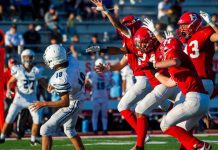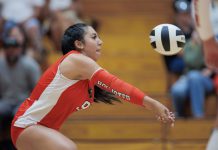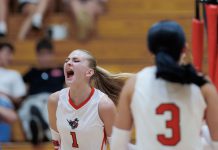As I stopped at the entrance of Green Lot One at Levi’s Stadium, the small numbers started to appear in signs overhead: Parking $60.00. I was dumbfounded. Sixty dollars to pay for parking? Fortunately, I had a parking pass and media credential to watch the Niners and Vikings play the second game of ESPN’s Monday Night Football slate.
Behind a breakout performance from running back Carlos Hyde—the second-year player from Ohio State rushed for a career-high 168 yards on 26 carries, including touchdown runs of 17 and 10 yards—the Niners rolled to a 20-3 victory. The game stories have been written, analysis provided and the day-after overreactions continue to pour out through numerous websites, TV channels and social media.
I’m here to give readers a different perspective on the sights and sounds of the NFL. Friends ask me all the time, what’s it like to cover a professional sports event? It’s not as glamorous as it seems. Make no mistake: I’m a very grateful person and thankful that I’ve got food to eat, a roof over my head and a job I enjoy.
But if I’m doing an honest critique about covering a game as a member of the media, the fact of the matter is besides the pregame field access—even TV can’t quite capture how enormous some of these guys are—TV viewers have a much better up-close experience watching the game from their own couch. Up in press row at Levi’s Stadium, I felt like I could literally—glass notwithstanding—reach out and touch the sky.
Press Row is way—and I mean waaaaay—up at Levi’s. Although the players don’t exactly look like ants, they were small enough that I often found myself watching one of the two huge video screens situated at the north and south ends of the stadium. In essence, I spent the majority of my viewing time watching a high-definition TV on steroids.
At Levi’s and most NFL stadiums, press row sits on the same level with the coaches’ box. Being in the upper tiers of a stadium give the teams’ coordinators and assistant coaches a bird’s eye view of the action, allowing them to see the entire field and watch the play develop.
The coaches and assistants in the coaches’ booth are connected to the rest of the coaching staff through a wireless headset, and they also have the advantage of analyzing and reviewing plays immediately afterward to make in-game adjustments.
Up in press row, meanwhile, members of the media receive injury updates and can watch replays from the cable or network feed, just like viewers watching from home.
But the overhead TVs in press row are muted, so if I wanted commentary or analysis, I’d have to stream something live on my computer. In short, football is a game tailor made for TV, meaning it translates well for the viewer, especially with TV’s technological advances in the last several years. There’s enough time to do replays between plays, hear commentary and see close-ups.
On a side note, the Niners communication department is always available to help out with media requests, and they do an excellent job of keeping things in order and relaying any necessary information to media members.
Up in press row, cheering is not allowed—although some members of the media never received the memo, apparently—and it’s a rather stale environment, with the air-conditioning on full blast, making for arctic-like conditions. You can tell who were the media newbies at Levi’s—the ones wearing short sleeves like me—because everyone else was wearing sweaters and jackets.
With all due apologies to Mark Twain, the coldest winter I ever spent was a September day in the Levi’s Stadium press box. So what’s it like to watch a game from press row?
It’s enjoyable but not nearly as entertaining as watching it from the confines of your own home.










